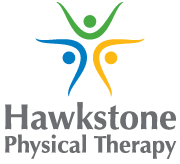Core Stability
/The “core” muscles refer to the group of muscles that surround your abdomen and low back. Strengthening these muscles helps to build a solid foundation from which other movement can originate. This can help improve performance and prevent injury. Stabilization exercises are a great place to start. A lot of commonly performed abdominal exercises place excess stress on the spine which can cause back pain so a better way to challenge the muscles is to hold a specific position. This activates the abdominal muscles without placing an extra load on the spine. Below are some stabilization exercises for you to try.
TA Activation
Your transverse abdominal muscle or “TA” is a key muscle it core stability. This muscle acts as a corset to keep your pelvis in proper alignment. This first exercise is very simple but forms the basis for other core stability exercises. Start by lying on your back with both knees bent. Place your hands on the bony parts of your hips and slide your fingers slightly inward. The TA muscle runs just below your fingers. Try to tighten this muscle by gently pulling your tummy down and away from your fingers. Avoid holding your breath and sucking your entire stomach in. There should be no movement with this exercise as you are just trying to activate the muscle. Hold the tension for 5-10 seconds or 3-5 breaths. As this gets easier try adding small leg movements, like lifting one leg off the ground. This exercise can also be performed when sitting and standing.
Bridge
Start this exercise by lying on your back with both knees bent and your feet about hip width apart. Gently press down into the ground with your feet, contract your abdominals by pulling your belly button down into your spine and lift your hips up. Stop when you have your shoulder, hip and knee in a straight line. Hold this position for 10 seconds, making sure your knees don’t fall in or out. Repeat this exercise 5 -10 times. Challenge yourself further by lifting one leg up while keeping your hips level. If you experience any back pain with this exercise do not lift the hips up as much.
Bridge with Side Pulls
Start this exercise in the same position as with the bridge exericse. Hold resistance tubing in each hand keeping both arms up at chest or shoulder height. As you go up into the bridge position slowly pull down with one arm bringing it to your side, pause then bring the arm back up. Complete 10 on one side maintaining the bridge position, relax back down then repeat on the opposite side.
Renegade Rows
Start this exercise in a high plank or push up position. Make sure to keep the hips flat and avoid arching through the lower back. Slowly lift one arm up off the ground in a row motion (squeeze shoulder blade and bend the elbow as you lift) making sure to keep the rest of the body stable. Do not rotate. Lower the arm down and back to the floor. Alternate sides, repeat 10 times each. This exercise can be performed with or without dumbbells.
Bird Dog
This exercise is one that should be performed slowly and in a controlled manner. Imagine as if you have a glass of water on your back and you don’t want to spill it. Start by being on both hands and knees, with hands directly under your shoulders and knees directly under the hips. Arch your back up like a cat then arch down. Find a place in the middle where the back feels flat. This is the position that you want to maintain. Slowly push straight back with one leg, as if pushing against a pedal then lift the leg off the ground. Avoid lifting the leg too high so the back arches or you rotate the pelvis. If you want to add an extra challenge slowly lift the opposite arm straight out in front. Hold this position for 5 seconds, relax down and repeat and on the opposite side. Repeat 5-10 times on each side










